- Jumping off points
These images are an invitation to experiment with layers and textures.
The wrought iron screen draws the eye, fierce, graceful and definitive, but unable to capture as much attention as the light behind the glass. There is a sense of possibility behind the glass that the determined iron does not obscure. The points of the design are intimidating, sharp and menacing, skillful and also cruel. The space behind the glass may remain unknown.

The stone screen is almost passive. It is solid and does not invite speculation about what it conceals. The age and difficulty of working the stone is immense; it looks heavy and cold. The circles lace through each other, but are clumsy and without lightness. Darker bands of figure in the stone provide contrast and an upward glancing trajectory.
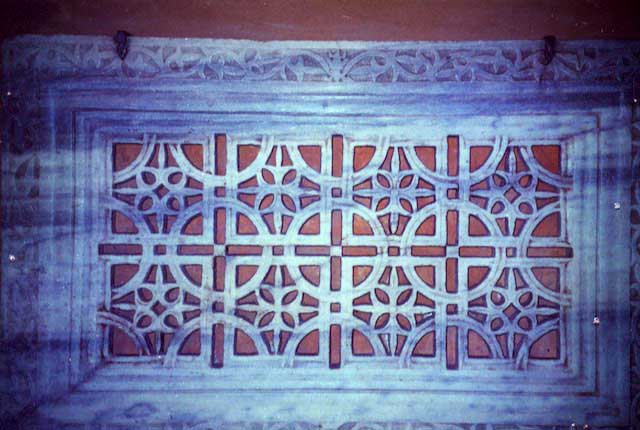
Brickwork with age and improvisation displays enormous character. These handmade bricks, roughly patched and joined, form part of an old arch in a culvert, and have many stories to tell. The accretions of mortar, the chips and textures, provide a rich three-dimensional surface that may be a starting point for felt, embroidery or fabric collage. The colours may be soft, but the surface is not. Skinned knuckles and broken nails are close behind any conversation with cold brick. However yielding when made, the bricks grow harsh as they dry and unforgiving as they age.
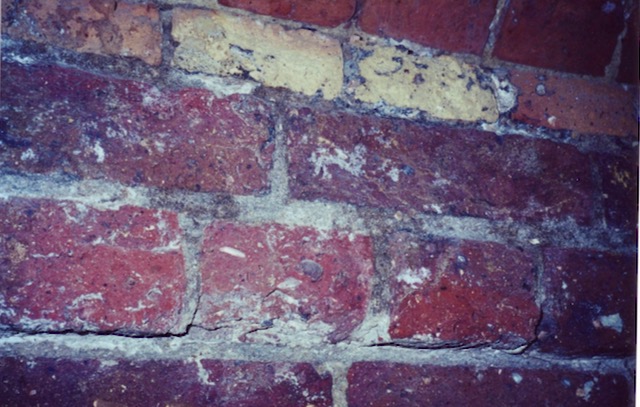
The stone surface is weathered, pitted. It was formed, and thrust into the crust to begin the long process of disintegration. In time it will return to component parts, weathering and changing other elements on the way. The interaction of forces is ruled by entropy, and we are all changed. Allowing the patterns of the process to emerge on a surface pressed into the stone sparks an inside view.
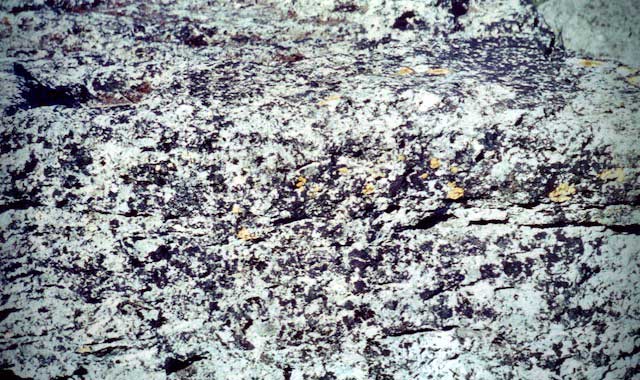
- Screen, 3 panels – Tasmanian celery-top pine, tussah silk, brass
I created a screen made from tussah silk fibres, teased into sheets and fused to create a strong, lustrous silk paper at Saddler’s Run. The wooden components of the screen are hand fashioned at Grey Owl Studio at Weetah, from Tasmanian celery-top pine, and finished with brass fittings.
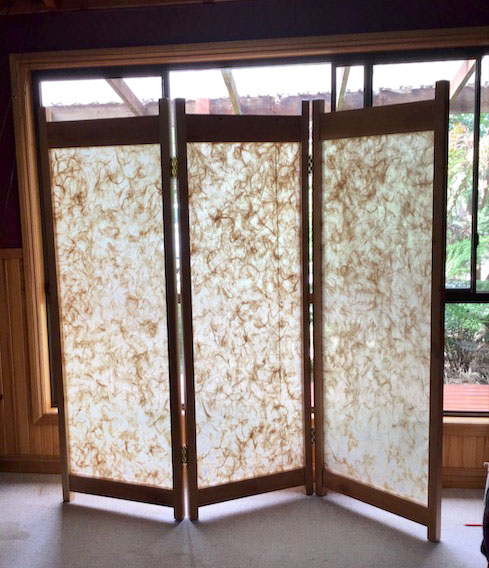
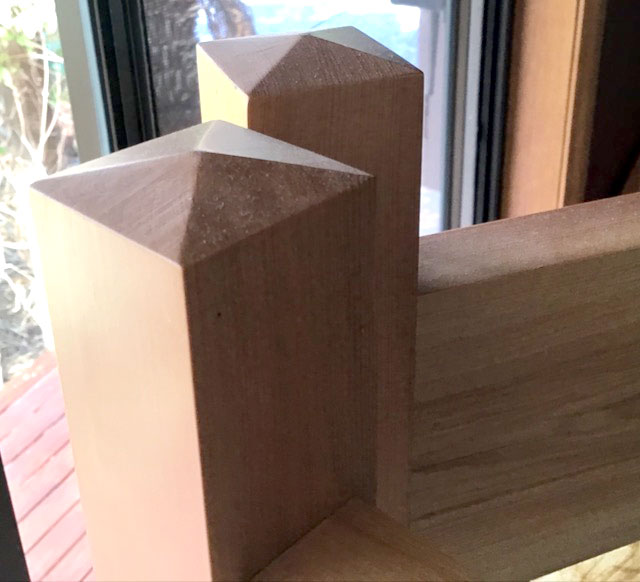
See below for some of my process.
I started with silk fibre:
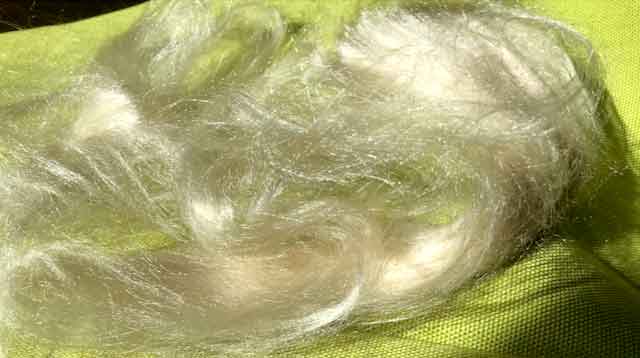
From there I fused it into sheets:
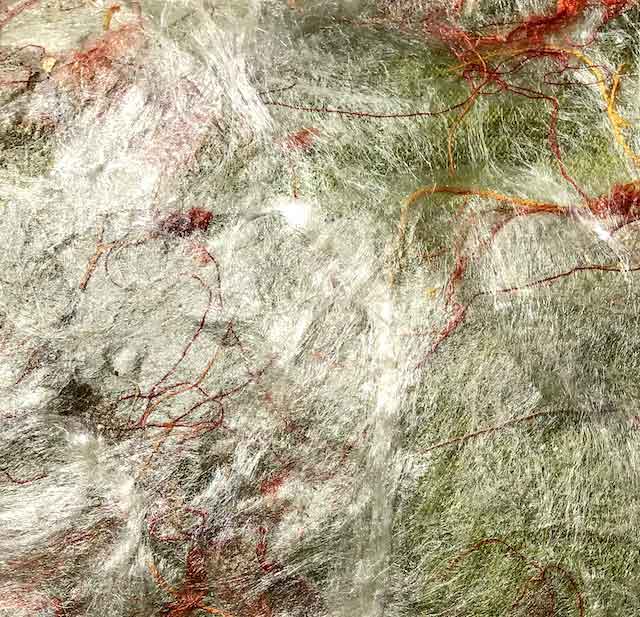
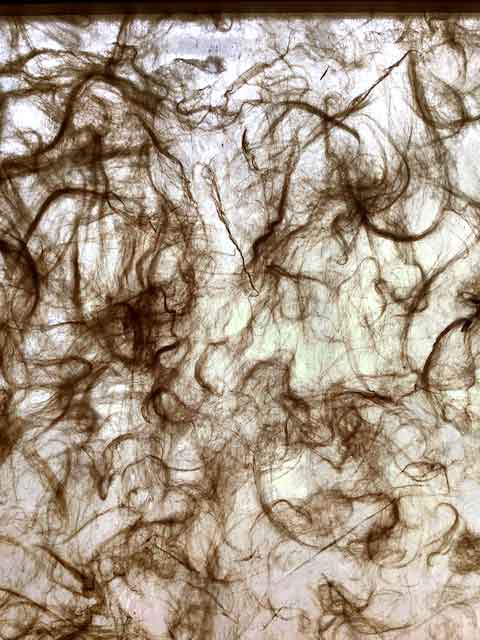
This is what makes up the panels in the completed screen.
- Handwoven Fabrics
Here’s a sample of the fabrics produced at Saddler’s Run.
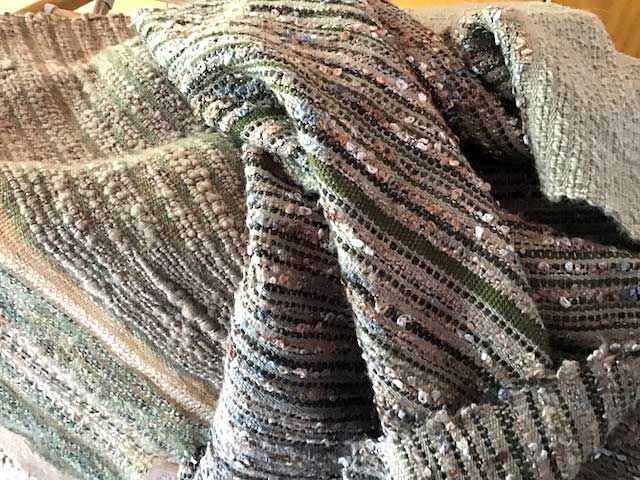
This one is wool, silk, mohair and touches of acrylic accent in an 8 metre garment length.
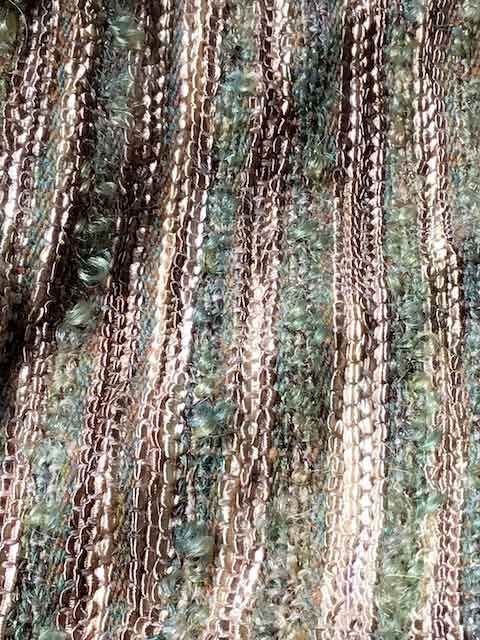
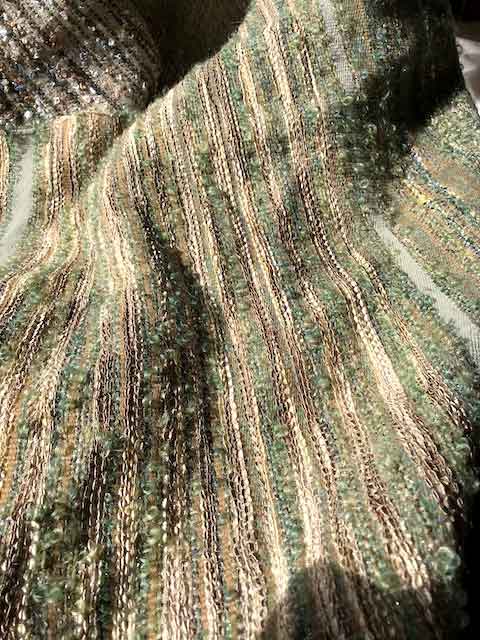
- Handspun Yarn
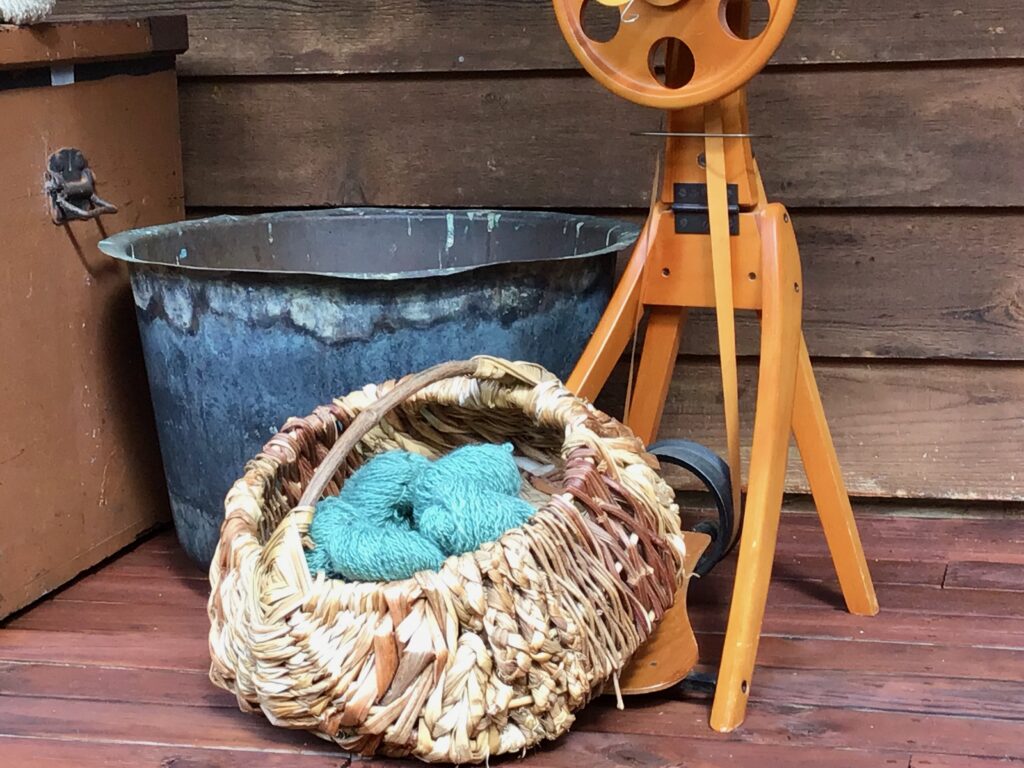
- The Wagga
The wagga is a traditional Australian quilt made for the men of the household to take droving, mustering, shearing or fencing etc – all the pursuits essentially ruinous to ‘good’ household linen. They were made from remnants of old woollen clothes or scraps, padded with rags and backed with flour bags, originally from the Wagga Wagga flour mill. These quilts were very heavy and warm; three layers held together with big running stitches. They had the significant advantage of the wool top extinguishing a campfire spark. When the job was done, they were taken apart and the layers washed and dried before being tacked together again.
This image is of a modern interpretation of a wagga. The top is woollen, made from repurposed and outworn clothing and scraps. Some of the scraps are from a factory making wool blazers. The backing includes a flourbag.
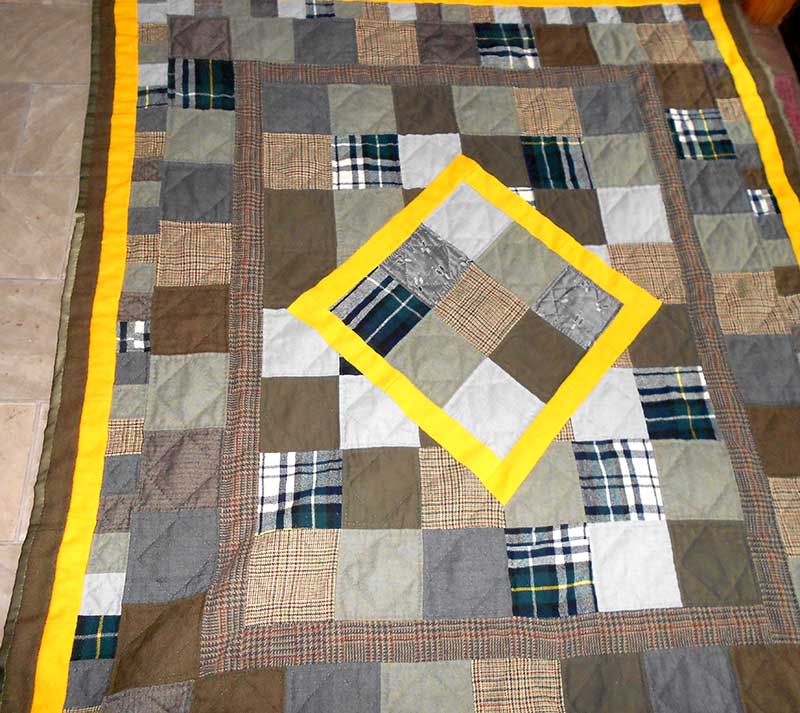
This image is of a modern interpretation of a wagga. The top is woollen, made from repurposed and outworn clothing and scraps. Some of the scraps are from a factory making wool blazers. The backing includes a flourbag.